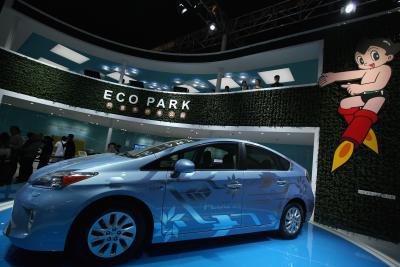
The environmental impact of the Toyota Prius includes the life-cycle of the vehicle from manufacture to disposal. Some critics claim the Prius is not good for the environment when all factors are considered, but the facts do not support those claims.
The Toyota Prius is a hybrid vehicle, which means that it is powered by both gasoline and electricity. The Prius was rated by the U.S. Environmental Protection Agency (EPA) as the “most efficient overall” vehicle for the 2010 model year, at 48 miles per gallon on the highway and 51 mpg in the city. (Reference 1)
The climate-change impact is measured in tons of CO2 emissions per year. The EPA gives the carbon footprint of the Prius as 3.7 tons per year, with the range for all vehicles being 3.5 to 16.2. (Reference 1)
Cars emit air pollutants that are hazardous to health and the environment such as particulates and compounds that create ozone. Because the Prius is the most highly rated vehicle in terms of mpg, it uses less fuel, and so emits less into the atmosphere than other vehicles. (Reference 1)
Manufacture of the Prius is more energy-intensive than for non-hybrid vehicles. According to an article in Slate, the mining process for nickel used in the batteries to run the electric motor is destructive to the environment. (Reference 2)
The amount of energy expended in driving a car over its lifetime far exceeds the energy used to manufacture and dispose of the vehicle, according to a fact sheet from the University of Michigan's Center for Sustainable Systems. The far higher gas mileage and fuel savings of the Prius make up for energy needed in mining and manufacturing to create the car..